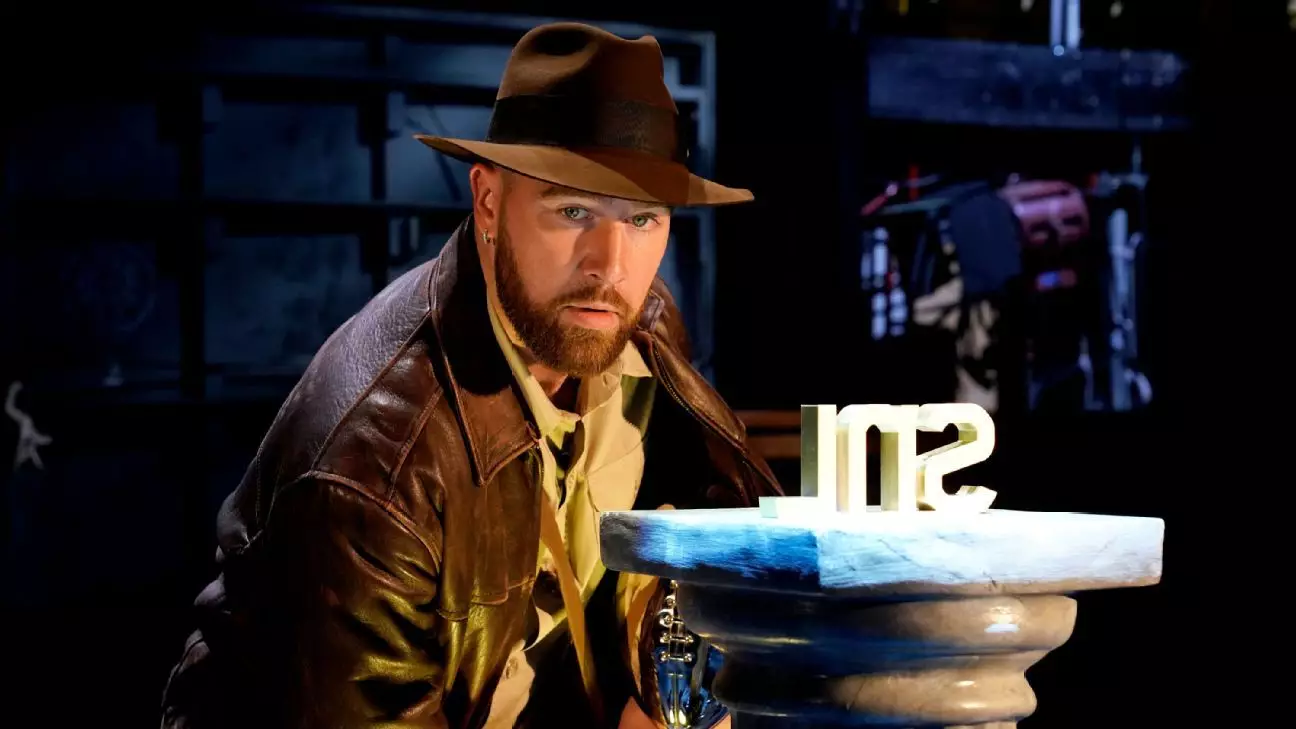“Saturday Night Live” (SNL) has been a staple of American television since its inception in 1975, blending comedy with the cultural zeitgeist of the times. As it marks its 50th anniversary, an examination of the intersection between athletics and comedy reveals not only a showcase of sports legends but also a platform that has contributed to the cultural fabric of television. Athletes have not only graced the SNL stage; they’ve propelled the show into the realm of sports fandom, thereby demonstrating that comedy and athletics are complementary art forms.
The tradition of integrating sports figures into the SNL format began early in the show’s history. Fran Tarkenton, the first athlete to host SNL in 1978, paved the way for future stars to step into the comedic limelight. Guesting alongside musical acts like Leo Sayer, Tarkenton illustrated how athletes could transcend the sports arena, offering audiences a glimpse into their personalities, which were often more relatable and humorous than might have been expected. This early adaptation established a successful model whereby sports stars could explore new avenues of entertainment, paving the way for an array of memorable appearances.
As the years progressed, SNL became a prominent platform for sports figures to display their comedic chops. Take, for instance, John Madden’s memorable 1982 appearance. Known for his enthusiastic commentary and larger-than-life personality, Madden’s sketches reflected his unique storytelling style, blending humor with anecdotes from his illustrious career. His on-screen presence established a template for how sports commentary could intersect with comedic performance, making complex sports narratives accessible and entertaining.
Similarly, 1989 marked the hosting debut of hockey icon Wayne Gretzky, who transitioned to the comedic realm with ease. His sketches addressed topics outside hockey, such as everyday life challenges, thereby humanizing a figure celebrated for athletic perfection. Such moments highlight a departure from the solo ethos often seen in sports—where athletes are solitary figures focused solely on competition—into a more collaborative sphere that embraces humor and vulnerability.
The introduction of female athletes to the SNL stage marked a significant evolution in the show’s history. Chris Evert, the first female athlete to host in 1989, broke barriers simply by stepping into the role. The inclusion of female figures such as Evert and later, Ronda Rousey, during SNL’s run exemplifies a broader societal shift towards gender equality in sports representation. Rousey’s hosting gig—just months after losing her title—challenged gender norms, proving that vulnerability can coexist with strength. Through comedic appearances, female athletes not only broadened the audience for SNL but also helped to redefine what it means to be a woman in sports.
From Tom Brady’s 2005 stint as host to Peyton Manning’s memorable turn in 2007, SNL showcases a wide array of athletes—each embracing comedy in their own unique styles. Brady’s appearance was characterized by a playful relatability that showed viewers beyond the polished image of the NFL icon, while Manning’s playful parody of NFL commercials resonated with a fanbase that relished his comedic take on athletics. The ability of these athletes to not only perform but to engage critically with their own personas is a testament to the versatility of modern sports celebrities.
Moreover, collaborations between athletes and comedians offer a new perspective on everyday themes. This concept was deeply explored during Charles Barkley’s sketches, which offered unfiltered views on both basketball culture and social issues. Barkley’s impactful moments cemented his role not just as an athlete, but as a cultural commentator, mirroring the era’s shifting landscapes in media and societal expectations.
As SNL steps into its next chapter, the legacy of its sports ties continues to attract young audiences. Recent hosts like Travis Kelce reflect contemporary athlete personas—multifaceted individuals navigating visibility in both sports and entertainment. Kelce’s hosting alongside his successful podcast showcases how modern athletes are not only competitors but also media-savvy entertainers. This crossover appeals to a diverse audience that recognizes the blurred lines between sports and pop culture.
As SNL celebrates its 50-year milestone, the interplay between sports and comedy continues to flourish. The contributions of athletes have transformed the landscape of not only SNL but have also influenced the broader cultural conversation surrounding the role of sports figures in society. As this dynamic continues to evolve, one can only imagine what the next wave of athletic comedians will bring to the stage.


Leave a Reply